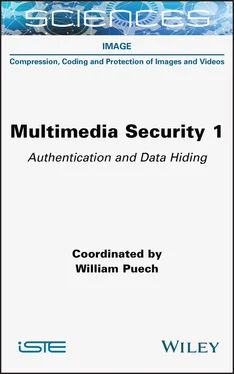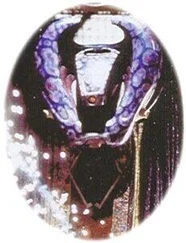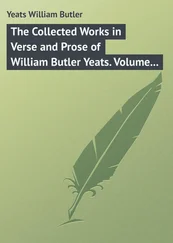Multimedia security is a relatively new theme, as evidenced by the publication dates of the articles referenced in the various chapters of these two volumes. In fact, out of about 900 references, nearly 50% of them are less than 10 years old, and more than 35% are between 10 and 20 years old. Of course, let us not forget certain authors, such as Auguste Kerckhoffs (1835–1903) and Claude Shannon (1916–2001), without whom our community would not have advanced in the same way. The history of multimedia security really begins at the end of the 1990s, with the beginning of watermarking, steganography, but in a very timid manner, this being motivated by the digitization of content and the protection of rights holders. In 2001, motivated by the attack of September 11, research in steganalysis hidden signal detection and statistical detection became the top priority. Between 2000 and 2010, there was an international explosion in watermarking security. There were also major contributions in steganography and steganalysis. During this same decade, research into securing multimedia data by specific encryption was born with the aspects of selective or partial encryption and crypto-compression, while guaranteeing the preservation of international formats and standards. From 2010, new facets of multimedia data security have emerged with forensics aspects, as well as statistical approaches. There has also been a strong development in signal processing in the encrypted domain, as well as the tracing of traitors. In 2020, research in forensics and steganalysis has been gaining momentum, in particular with the emergence of machine learning, and especially with the exploitation and development of deep convolutional neural networks. The recent advances in this field have varied greatly, from steganography (GAN), adversarial methods, methods by content generation, to the processing of encrypted content, including the links between learning and information leakage, applications in biometrics and “real-life” content analysis.
This project of works began more than two years ago and has really meant a lot to me. In fact, at the French level, we have a certain strength in this field, and numerous gems that we have brought to light. Nothing could have been achieved without the support of the GdR ISIS and GdR computer security. It is largely because of these GdR that we have succeeded in tracking research activities in the field of multimedia security from a French point of view. The towns represented in these two works illustrate the richness and national diversity (Caen, Grenoble, La Rochelle, Lille, Limoges, Lyon, Montpellier, Paris, Poitiers, Rennes, Saint-Étienne and Troyes), because some of these cities, as we will see during our reading, are represented by several laboratories and/or universities.
As we will be able to see throughout these two volumes, even if they are grouped around multimedia security, the research themes are very broad and the applications varied. In addition, the fields cover a broad spectrum, from signal processing to cryptography, including image processing, information theory, encoding and compression. Many of the topics in multimedia security are a game of cat and mouse, where the defender of rights must regularly transform into a counter-attacker in order to resist the attacker.
The first volume primarily focuses around the authentication of multimedia data, codes and the embedding of hidden data, from the side of the defender as well as the attacker. Concerning the embedding of hidden data, it also addresses the aspects of invisibility, color, tracing and 3D data, as well as the detection of hidden messages in images by steganalysis. The second volume mainly focuses on the biometrics, protection, integrity and encryption of multimedia data. It covers aspects such as image and video crypto-compression, homomorphic encryption, the embedding of hidden data in the encrypted domain, as well as the sharing of secrets. I invite the reader, whether they are a student, teacher, researcher or industrial to immerse themselves in these works, not necessarily by following the intended order, but going from one chapter to another, as well as from one volume to another.
These two volumes, even though they cover a broad spectrum in multimedia security, are not meant to be exhaustive. I think, and hope, that a third volume will complete these first two. In fact, I am thinking of sound (music and speech), video surveillance/video protection, camera authentication, privacy protection, as well as the attacks and counter-attacks that we see every day.
I would like to thank all of the authors, chapter managers, their co-authors, their collaborators and their teams for all of their hard work. I am very sorry that I have had to ask them many times to find the best compromises between timing, content and length of the chapters. Thank you to Jean-Michel, Laurent, Philippe (×2), Patrick (×2), Teddy, Sébastien (×2), Christophe, Iuliia, Petra, Vincent, Wassim, Caroline and Pauline! Thank you all for your openness and good humor! I would also thank the GdR ISIS and computer Security through Gildas and Cédric, but also Christine and Laure for their proofreading, as well as for establishing a connection with ISTE Ltd. I would also like to thank all of the close collaborators with whom I have worked for more than 25 years on the various themes that I have had the chance to address. PhD students, engineers, interns and colleagues, all of them will recognize themselves, whether they are in my research team (ICAR team) or in my research laboratory (LIRMM, Université de Montpellier, CNRS).
In particular, I would like to thank Vincent, Iuliia, Sébastien and Pauline for having accepted to embark on this adventure. Pauline, in addition to writing certain chapters, has been a tremendous collaborator for the advancement of this book. All of those responsible for the chapters have seen that, Pauline has been my shadow over the past two years, to ensure that these two works could see the light of day in 2021. Thank you Pauline! To conclude, I would like to warmly thank all of the members of my family, and in particular Magali and our three children, Carla, Loriane and Julian, whom I love very much and who have constantly supported me.
November 2021
1
How to Reconstruct the History of a Digital Image, and of Its Alterations
Quentin BAMMEY1, Miguel COLOM1, Thibaud EHRET1, Marina GARDELLA1, Rafael GROMPONE1, Jean-Michel MOREL1, Tina NIKOUKHAH1 and Denis PERRAUD2
1 Centre Borelli, ENS Paris-Saclay, University of Paris-Saclay, CNRS, Gif-sur-Yvette, France
2 Technical and Scientific Police, Central Directorate of the Judicial Police, Lyon, France
Between its raw acquisition from a camera sensor and its storage, an image undergoes a series of operations: denoising, demosaicing, white balance, gamma correction and compression. These operations produce artifacts in the final image, often imperceptible to the naked eye but yet detectable. By analyzing those artifacts, it is possible to reconstruct the history of an image. Indeed, one can model the different operations that took place during the creation of the image, as well as their order and parameters.
Information about the specific camera pipeline of an image is relevant by itself, in particular because it can guide the restoration of the image. More importantly, it provides an identifying signature of the image. A model of the pipeline that is inconsistent across the whole image is often a clue that the image has been tampered with.
However, the traces left by each step can be altered or even erased by subsequent processing operations. Sometimes these traces are even maliciously masked to make a forged image seem authentic to forensic tools. While it may be easy to deliberately hide the artifacts linked to a step in the processing of the image, it is more difficult to simultaneously hide several of the artifacts from the entire processing chain. It is therefore important to have enough different tests available, each of them focused on different artifacts, in order to find falsifications.
Читать дальше












